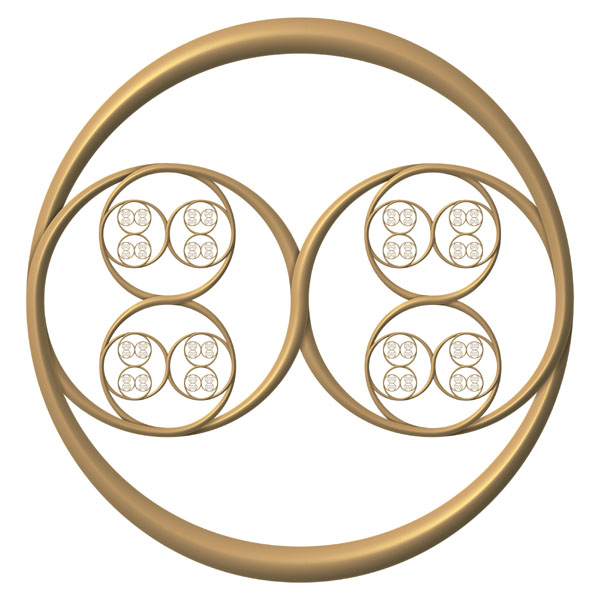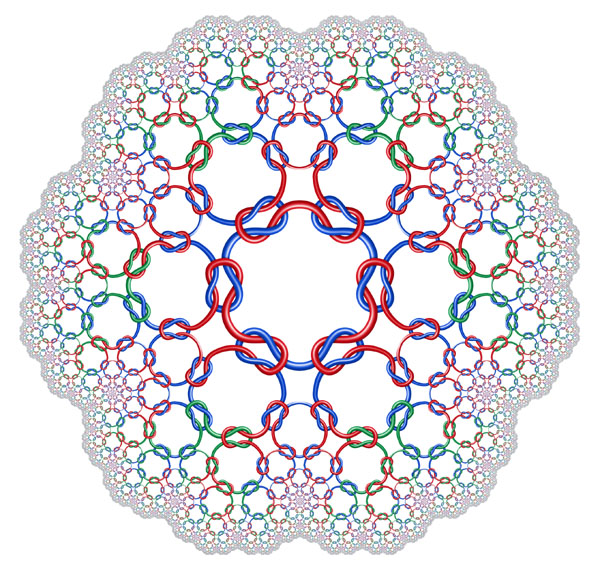Robert Fathauer
"Iterated Lattice No. 1"
Digital print, 8" X 24", 2007.

This print was created by stylizing a seven-crossing knot and then iterating
it. The starting geometric shape is a regular hexagon, shown at the top of the
print. Below it is the stylized knot. Below that is the first iteration, in
which four smaller copies of the knot are added. At the bottom of the print
is the second iteration, in which four even smaller copies are added to each
of the four small copies found in the first iteration. This process could be
continued ad infinitum with the knot remaining unicursal (a single strand).
The print contains a single strand that weaves through the four stages in alternating
over/under fashion. The esthetics of the design are intentionally borrowed from
Islamic lattice designs.
"Infinity"
Digital print, 12" X 12", 2006.

This print is based on a unicursal fractal knot. The starting point
is a particular projection of the trefoil knot. The knot is then
iterated by incorporating two smaller copies within loops in the
starting knot in such a way that the resulting more complex knot remains
unicursal. Additional iterations using the same algorithm yield a
fractal knot.
"Square Knots Stretching to Infinity"
Digital print, 14" X 14", 2007.

This print depicts a fractal link design. Each strand has four lobes and connects
to other strands via square knots. The design was created by decorating the
individual tiles in a fractal tiling with knot-like graphics
Robert Fathauer
Small business owner, puzzle designer, and artist, Tessellations Company, Phoenix, Arizona
"Robert Fathauer makes limited-edition prints inspired by tiling and fractals. He employs mathematics in his art to express his fascination with certain aspects of our world, such as symmetry, complexity, chaos, and infinity. His artworks are created on a Macintosh computer, primarily using the commercial programs FreeHand and Photoshop. In the past, he has transferred these designs to paper by hand to create serigraphs and woodcuts. More recently, he has had digital files printed directly on photographic paper. This latter technique allows a greater level of fine detail, required by the small features of fractals."